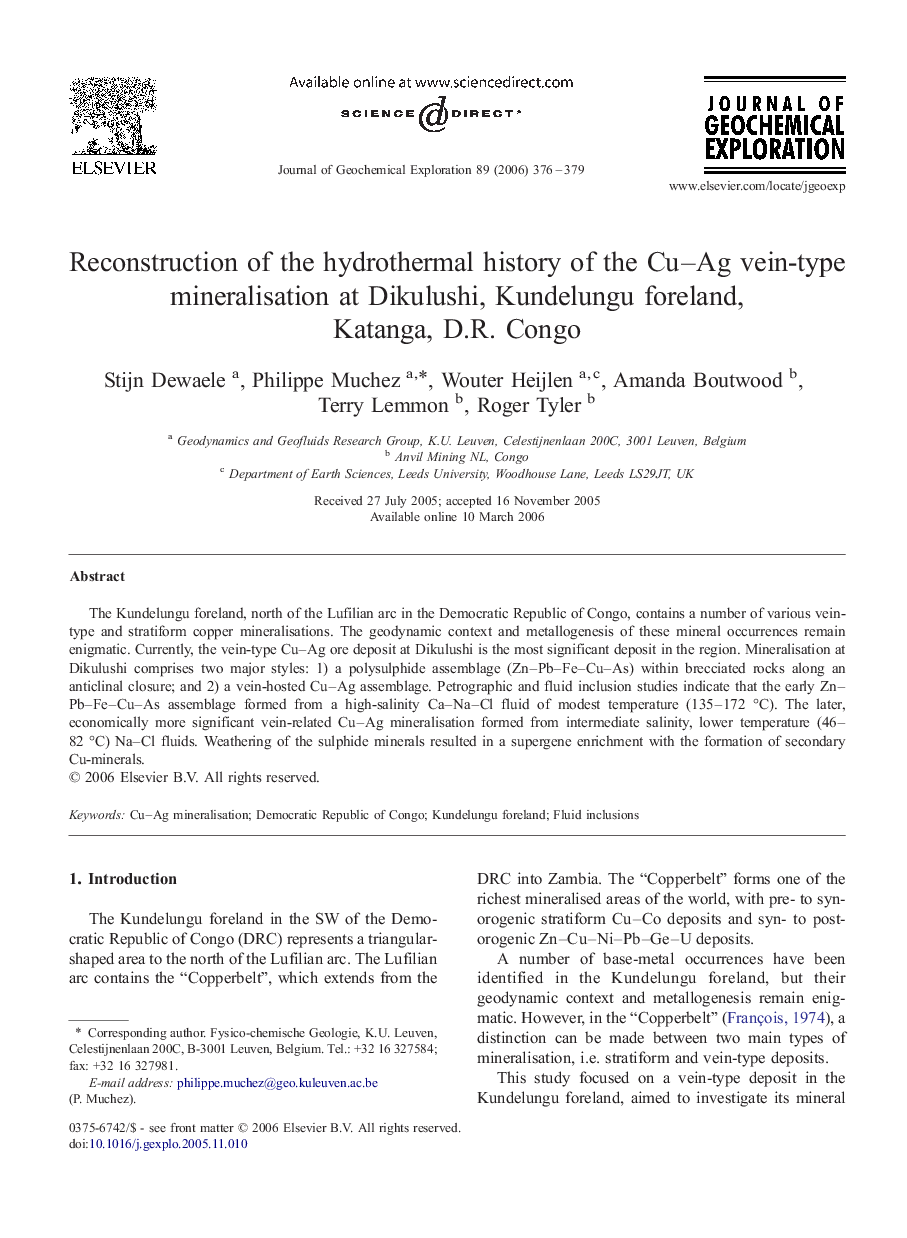| Article ID | Journal | Published Year | Pages | File Type |
|---|---|---|---|---|
| 4458493 | Journal of Geochemical Exploration | 2006 | 4 Pages |
The Kundelungu foreland, north of the Lufilian arc in the Democratic Republic of Congo, contains a number of various vein-type and stratiform copper mineralisations. The geodynamic context and metallogenesis of these mineral occurrences remain enigmatic. Currently, the vein-type Cu–Ag ore deposit at Dikulushi is the most significant deposit in the region. Mineralisation at Dikulushi comprises two major styles: 1) a polysulphide assemblage (Zn–Pb–Fe–Cu–As) within brecciated rocks along an anticlinal closure; and 2) a vein-hosted Cu–Ag assemblage. Petrographic and fluid inclusion studies indicate that the early Zn–Pb–Fe–Cu–As assemblage formed from a high-salinity Ca–Na–Cl fluid of modest temperature (135–172 °C). The later, economically more significant vein-related Cu–Ag mineralisation formed from intermediate salinity, lower temperature (46–82 °C) Na–Cl fluids. Weathering of the sulphide minerals resulted in a supergene enrichment with the formation of secondary Cu-minerals.
